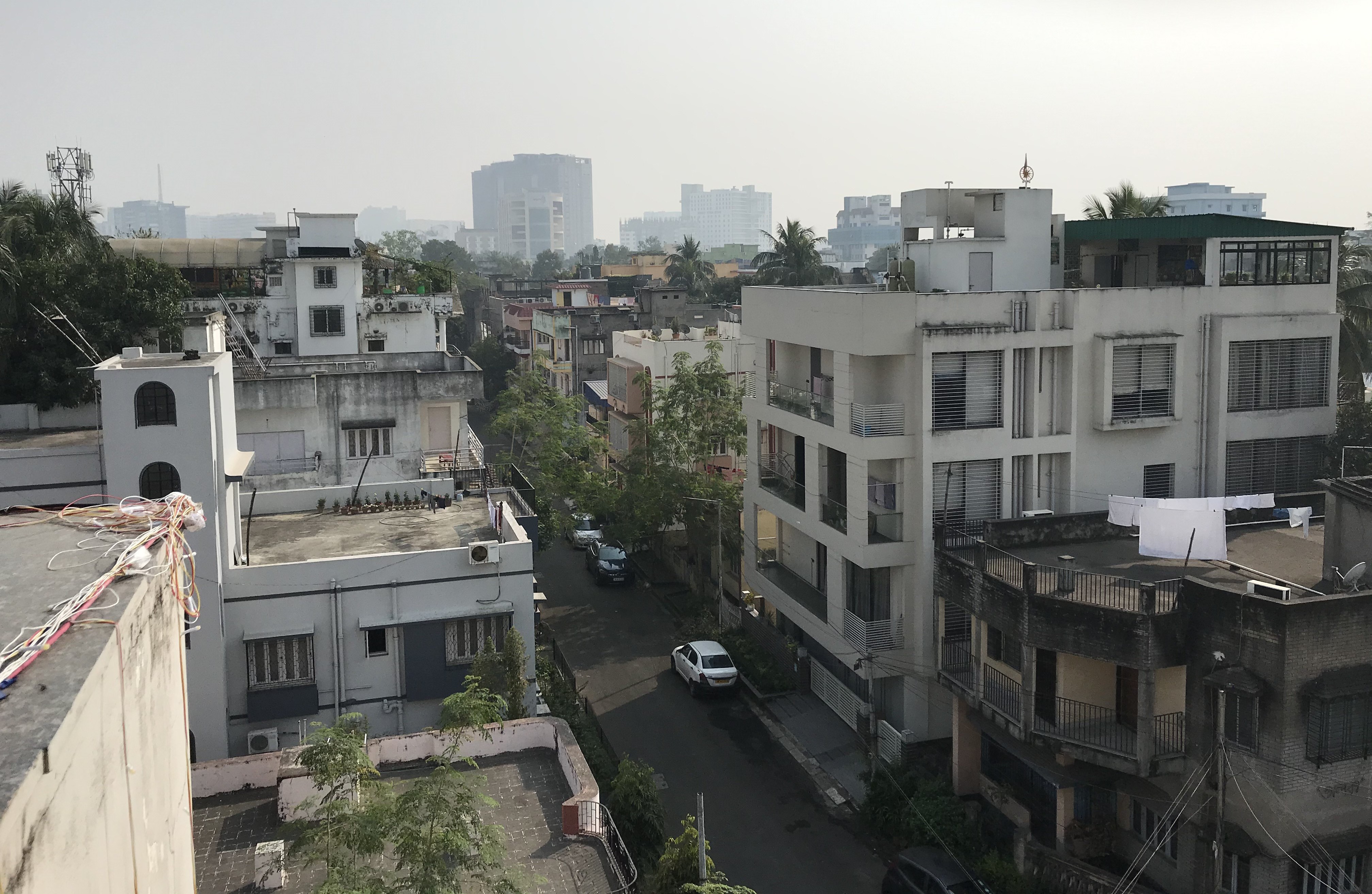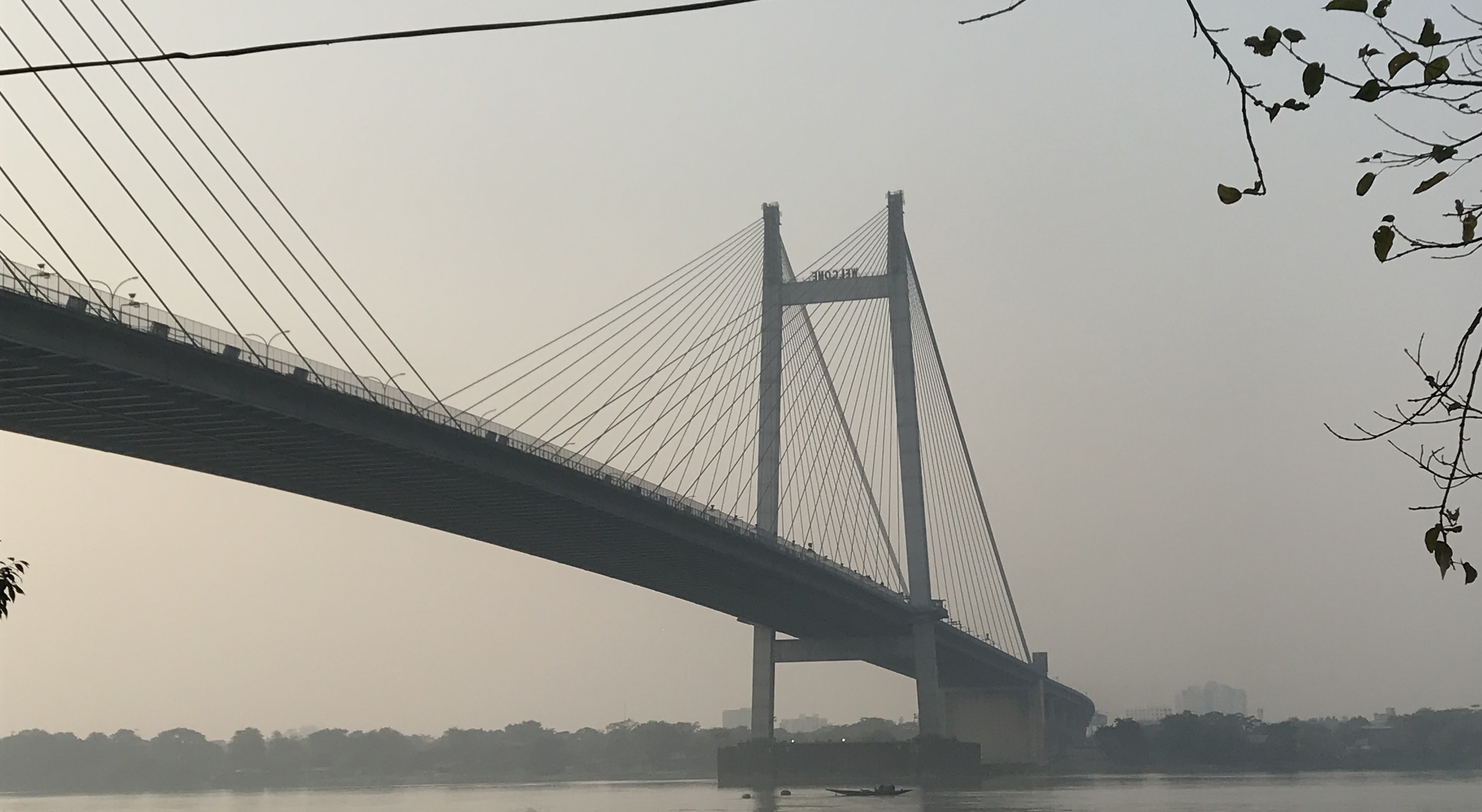Observations on Indian traffic
I’ve recently returned from my second trip to India. Aside from the wedding festivities (I got married), the people, the architecture, the food, and the ever present mosquitoes, perhaps what stood out the most is the way indian traffic works.
City traffic
We spent most of the trip in Kolkata where, aside from the very early hours of the morning, it’s always busy. Driving involves a lot of lane changing and squeezing through small gaps to make progress through congestion. There are few road markings, and no traffic controls except at major junctions.
As far as I can tell, the primary tenets of city driving are:
- Drive like you’re on a motorbike (even if you’re a bus).
- Only give way to things bigger than you (unless you can squeeze past, in which case do that).
- Blow the horn to say ‘I’m here, don’t swerve into me’, or ‘I’m coming through, don’t get in the way’. Horns are a permanent fixture of the city’s soundscape.
- If a short hop onto the wrong side of the road is a faster route to your destination, go for it.
All together, this makes driving a pretty alarming experience. After a while of driving and not being involved in any accidents, however, one comes to realise that it works. Whether this is because of or despite the craziness is hard to tell, but it’s a system, and as long as everyone goes along with it, it works.

Road trip
After the wedding we took a road trip to Bolpur, a 4-5 hour drive across about half of West Bengal. This was when I learnt that driving outside the city is even crazier, mostly because of the much higher speeds, and the lorries.
India inherited driving on the left side of the road from the British occupation. However, unlike over here, staying on the correct side is more of a suggestion than a rule. This means driving into oncoming traffic, with one side swerving back only if it’s really necessary, happens a lot. Similarly, staying left on highways is absolutely not the norm, which means lane hopping and squeezing between slowly overtaking pairs of lorries/buses were common - much like city driving, only now being done at 5x the speed.
The primary rule of the road seems to be to overtake if possible, otherwise tailgate until you can. In the meantime, drift out of lane as far as possible to maximize visibility, and make overtaking as quick as possible when the opportunity presents itself.
An interesting variation of this was when we caught up to a pair of tractors, locked wheel to wheel in a slow motion overtaking maneuver (not on a highway, just using both sides of a normal road). Unable to immediately get past, our driver moved to the middle of the road, peering through the gap between them for oncoming traffic, until commencing our own overtake the instant the faster tractor started to pull back to the left.
There are also now two hierarchies in play when determining who has priority. As in the city, size is a major factor but now that speed is a much bigger differentiator faster vehicles sometimes take priority over larger ones. It’s also important to remember that there are people traveling at a very wide range of speeds, all on the same roads - walkers are slower than cyclists, are slower than tractors and wagons, are slower than rickshaws, are slower than buses/lorries, are slower than motorbikes, are slower than cars.
Animal life is also an important part of driving. Contrary to what you may have heard, cows are not a common feature of the roads (at least in Bengal), but dogs and goats (most commonly alone, but sometimes being herded, occasionally on highways) most certainly are. Some are smart enough to get out of the way, but others need to be swerved around.

Finally, I noticed several people driving with their hazard lights on. According to our driver it’s used as a signal of being in a particular rush, kind of like a civilian siren.